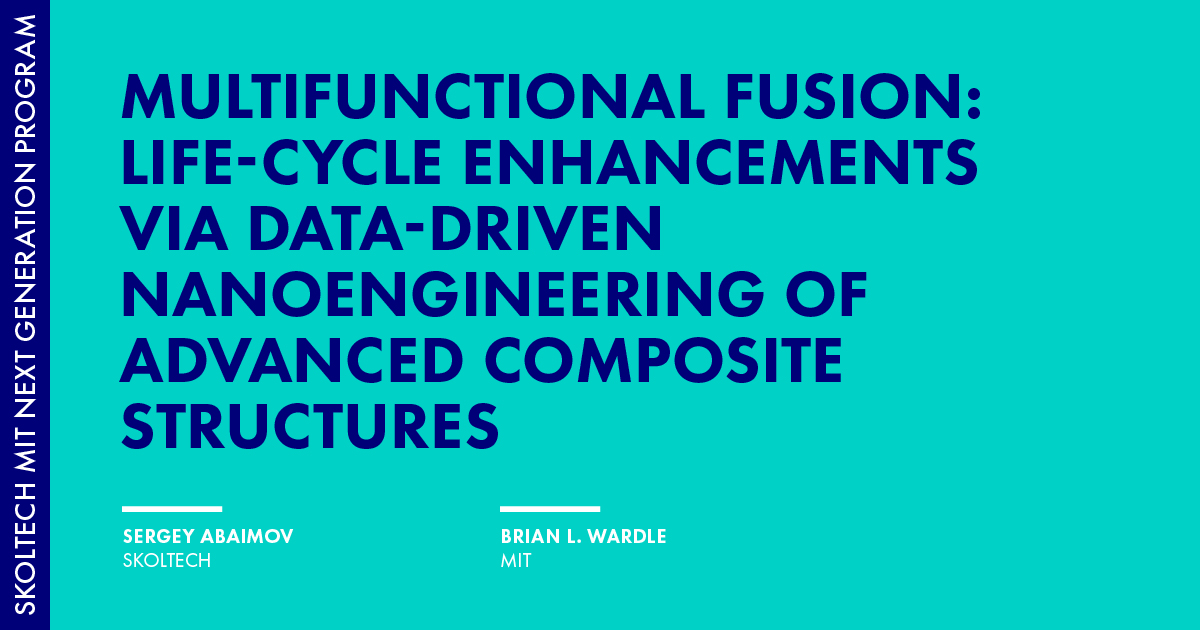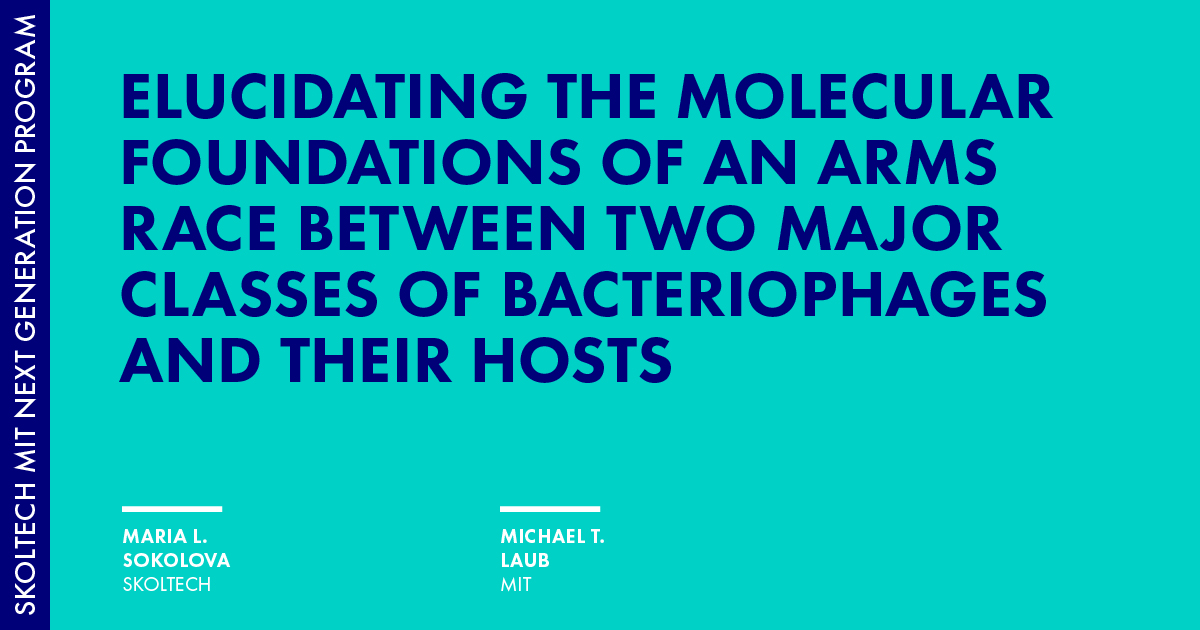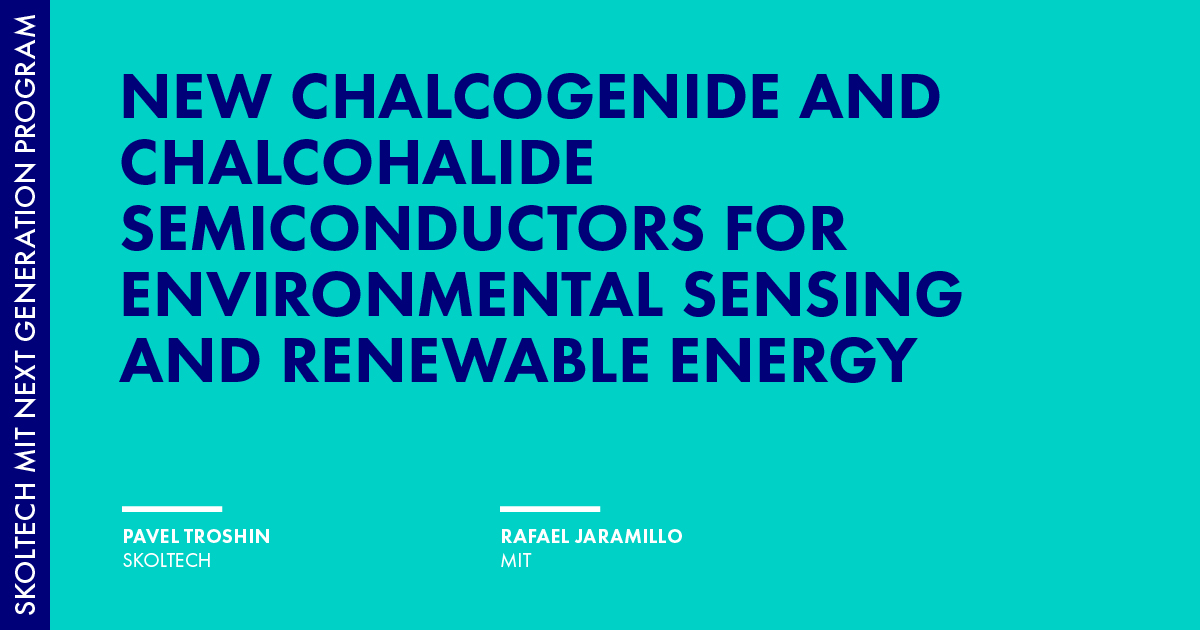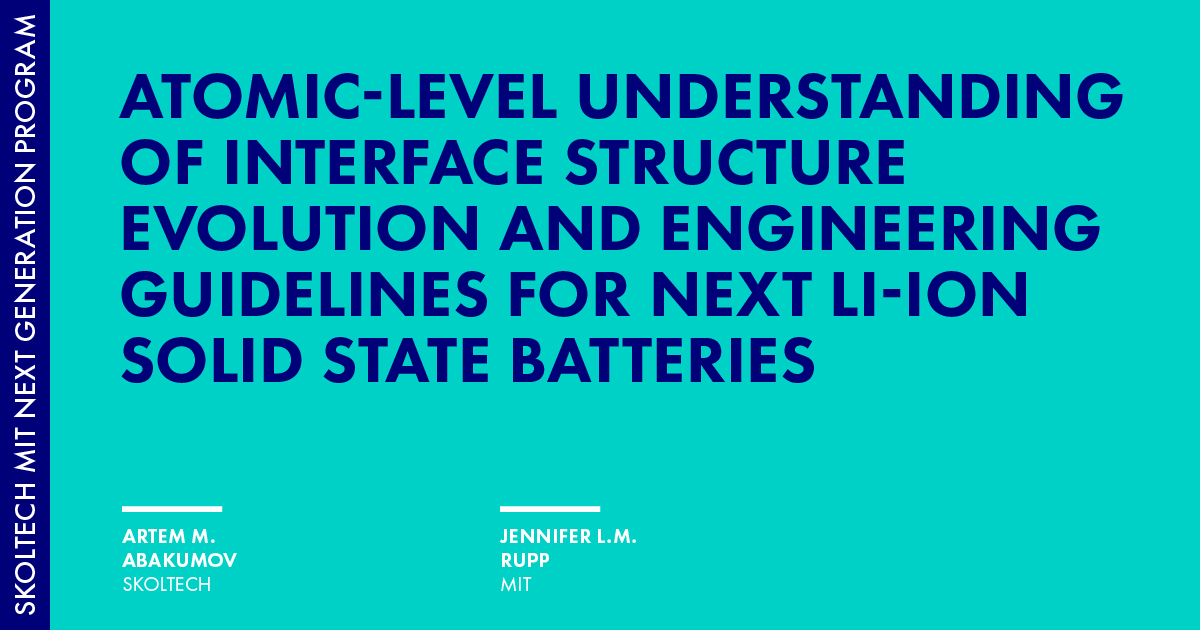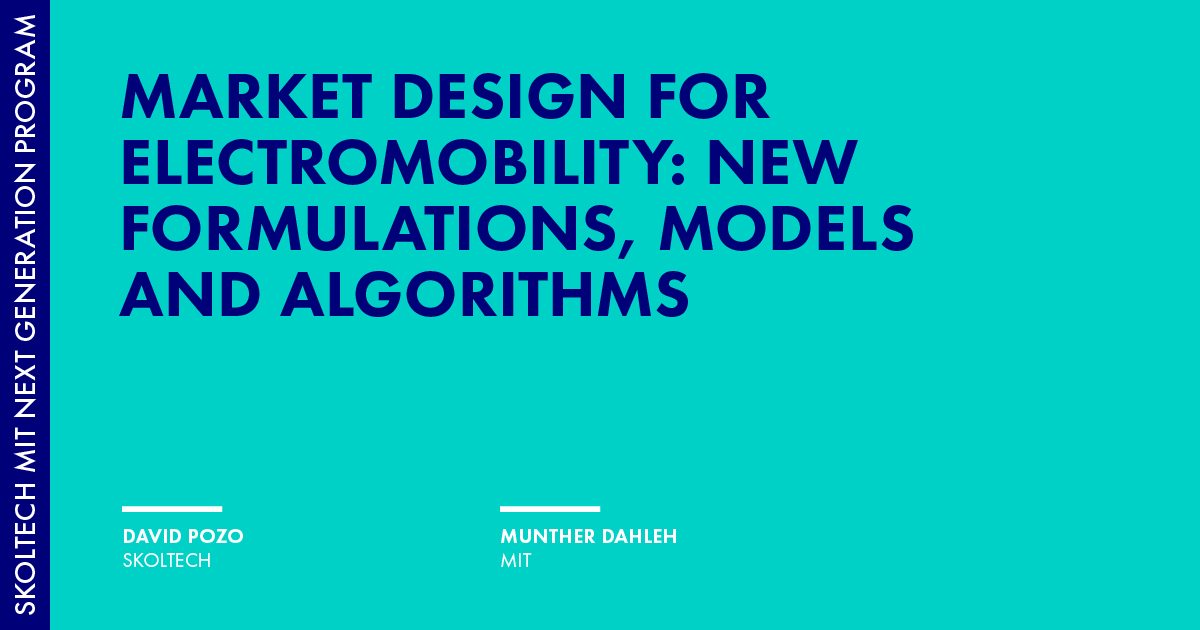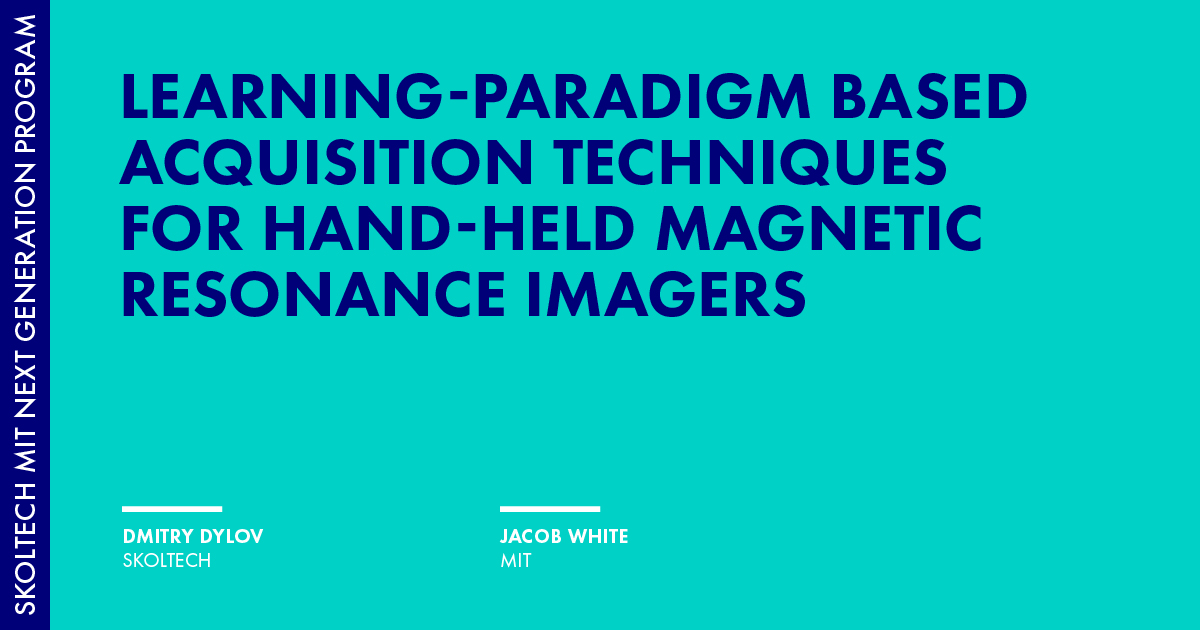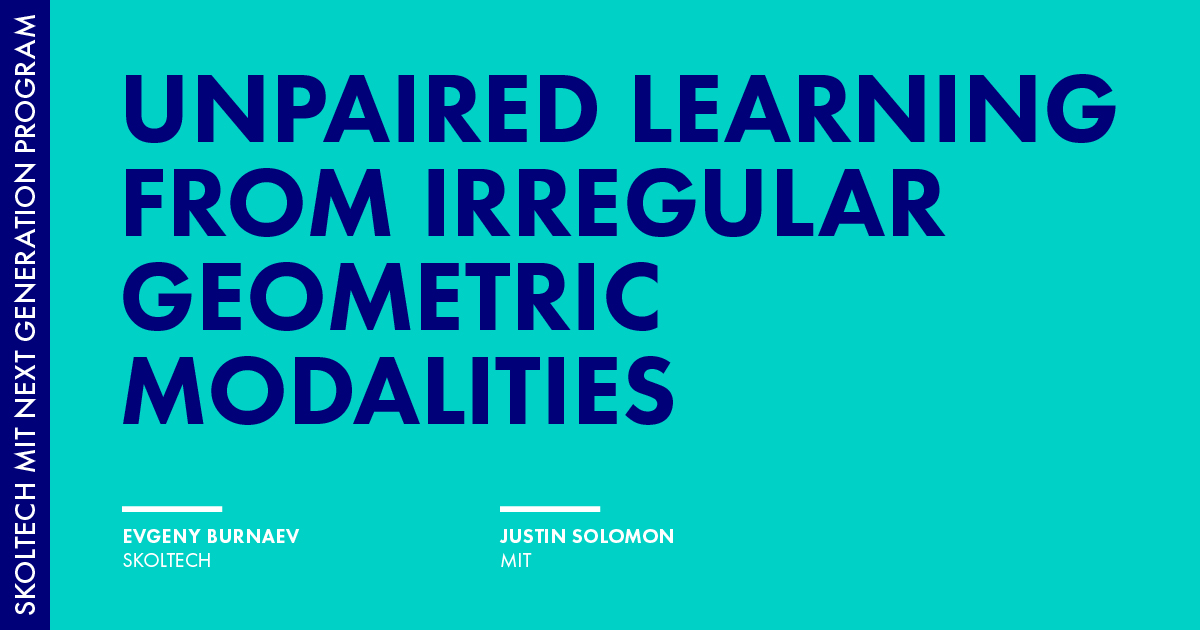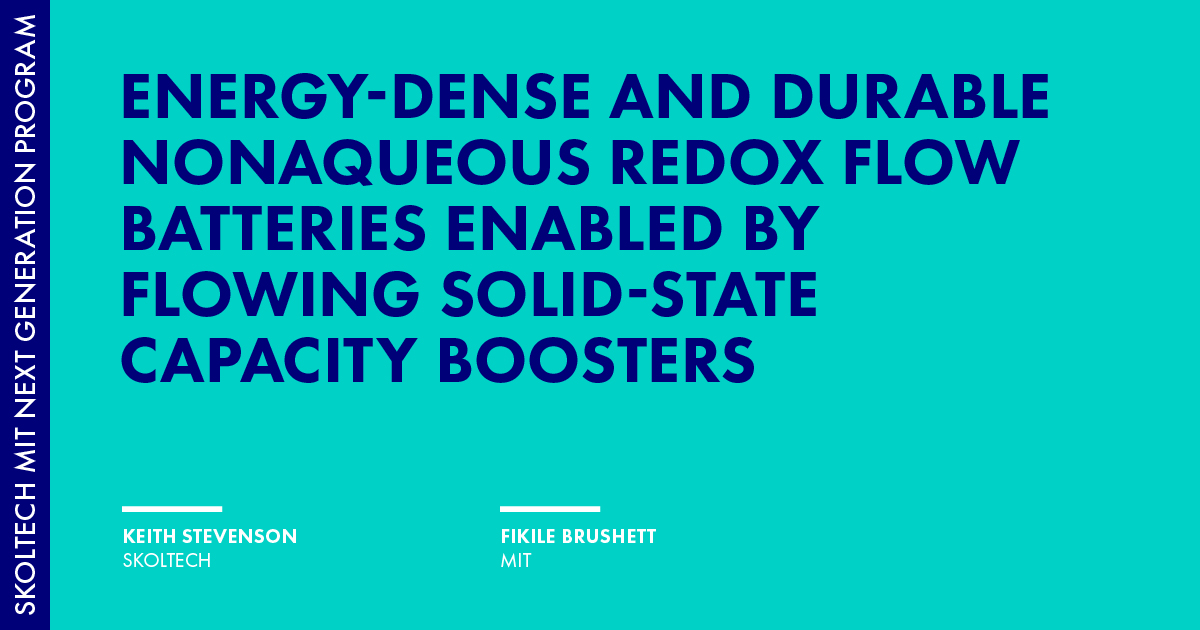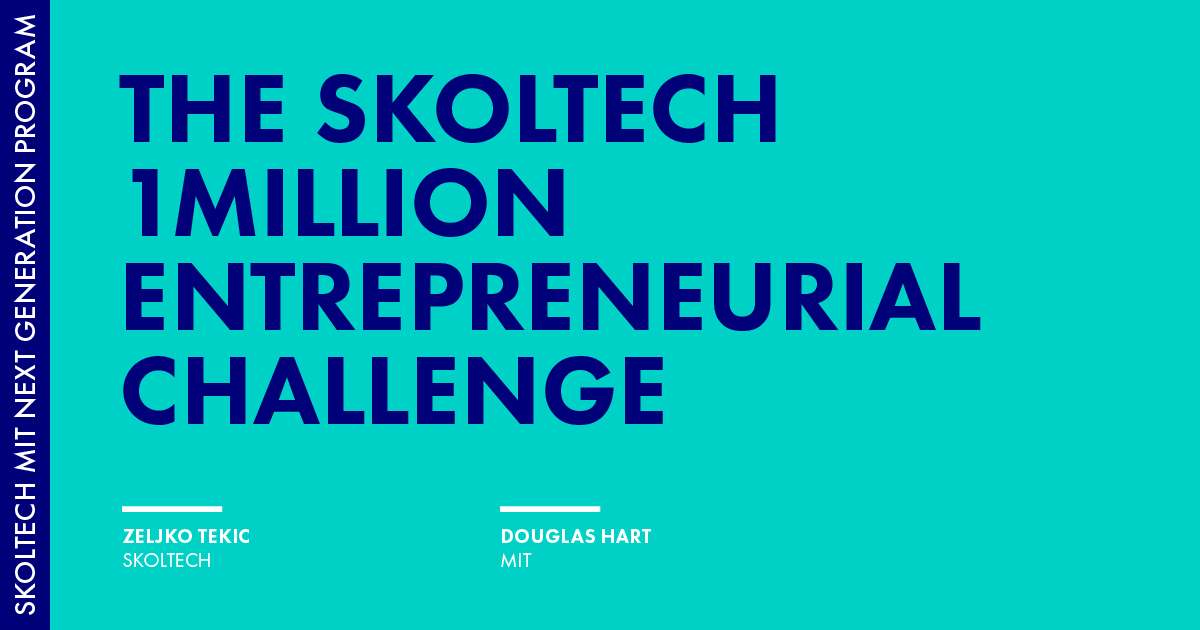The third call for proposals for the Next Generation Program: Skoltech-MIT Joint Project, in 2020, yielded 32 joint submissions for faculty-initiated projects in research, education, and/or innovation. Reviews of each proposal were solicited from both Skoltech and MIT. Each full proposal submitted within this call was evaluated by individually selected internationally recognized experts in the particular research topic. External coordinators with excellent research record and experience of high-level academic expertise were appointed for overall assessment of the proposals falling within one of the broader research fields. On the MIT side, each full proposal was reviewed by an expert with an excellent research record relevant to the broad research field. Each proposal received at least four reviews that were considered by the NGP Steering Committee. Final decisions were made based on the ranking of proposals; more high-quality proposals were received than NGP funds would permit and the budget determined the cutoff.
In total, 8 research-driven projects and one project in the area of innovation were unanimously approved by the Steering Committee and selected for support.
Both the organizer of external expertise and NGP Steering Committee acknowledged the very strong set of proposals reviewed, noting that many more than the selected 9 were worthy of funding. Long-time panel members noted the significant growth in quality from the 1st to the 2nd NGP Call for Proposals has progressed yet again in this 3rd NGP call. Notably, many proposals received outstanding scores from the international experts, reflecting the exceptional quality of proposals that meet rigorous international standards of those seeking competitive funding from such US federal and European grant agencies as NSF, Horizon 2020, NIH, etc.
The Skoltech – MIT Joint Next Generation Program (NGP) covers the whole range of academic and institution development activities. That includes research, education, innovation and academic services towards establishing and promoting a mutually beneficial long-term bilateral collaboration between Skoltech and MIT, as well as further development of Skoltech work streams.
Multifunctional Fusion: Life-cycle enhancements via data-driven nanoengineering of advanced composite structures
Skoltech PI: Sergey Abaimov, Center for Design, Manufacturing, and Materials
MIT PI: Brian L. Wardle, Department of Aeronautics and Astronautics
Multifunctional fusion of manufacturing & in-service functionalities is achieved via nanoengineering of structural prepreg-based composites, enhancing performance across the life cycle for light weighting applications. Experimental 3D morphology quantification across nm- to cm length scales will be enabled by artificial intelligence (AI)-driven approaches to create digital twins, enabling data-driven design. Firstly, the nano-engineered heaters remove the need for expensive, power consuming, and production-bottleneck autoclaves and ovens, by reduction of porosity due to nano capillarity (no need for high applied pressure) and economically delivering heat directly into laminate (Out-of-Oven, >100X energy savings) as proven by MIT. The heating functionality can also be utilized in service for de-icing or enhanced thermographic damage sensing. Secondly, the same system is a sensor measuring the degree of cure, allowing closed-loop spatial part quality control and residual stress management. This concept has been preliminarily demonstrated by MIT and will be operationally extended in this proposal. Thirdly, in-service structural health monitoring and damage sensing will extend the manufacturing quality control to performance management. In-service sensing allows detection of damage at early stages and provides input for need-for-maintenance. The nano-engineered system enhances the structural function, in striking contrast with the degradation of mechanical properties with traditional use of embedded sensors such as optical fiber sensors. The AI-driven quantification of the morphology on nano- (3D TEM) and micro-scale (3D XCT) lead to stochastic and deterministic digital twins at the cm-scale, using concepts demonstrated by Skoltech. Development of the nano-engineered system results in a first-ever prototype demonstrator with fused multifunctionality.
Elucidating the molecular foundations of an arms race between two major classes of bacteriophages and their hosts
Skoltech PI: Maria L. Sokolova, Center of Life Sciences
MIT PI: Michael T. Laub, Department of Biology
There are an estimated 1031 bacteriophages, viral predators of bacteria, on the planet. This includes a huge diversity of phages that live in and on humans, shaping the communities of bacteria that comprise the microbiome, which directly impacts human health and disease. Additionally, phage therapy has emerged as a promising new alternative to traditional small-molecule antibiotics. Despite the numerical prevalence of phages, their importance to human health, and their therapeutic potential, most phages remain extremely poorly characterized. This project aims to use a combination of powerful new approaches, including Hi-C technology, to probe two important classes of phages, the so-called “jumbo” phages and crAssphages, the latter of which are the most abundant phages of human gut. Specifically, we will: i) Elucidate chromosome organization, DNA replication, and transcription of bacterial host and viral predator during infection by model “jumbo” phages to provide insights needed for rational engineering of them as new antimicrobial agents; ii) Discover new bacterial anti-viral systems and their mechanisms of action to better understand the arms race between bacteria and phages, which drives their co-evolution and which is critical to understand the long-term potential of successful deployment of phages in clinical settings as antimicrobials; iii) Determine the pairwise interactions between bacteria and phages, especially crAssphages, in the human gut and study these interactions in controlled laboratory settings, to inform new approaches for manipulating the composition of the human gut microbiome.
New chalcogenide and chalcohalide semiconductors for environmental sensing and renewable energy
Skoltech PI: Pavel Troshin, Center for Energy Science and Technology
MIT PI: Rafael Jaramillo, Department of Materials Science and Engineering
We propose to design new families of chalcogenide and chalcohalide semiconductors and exploit them for applications in solar energy conversion and environmental chemical sensing. The materials targeted are highly promising for optoelectronic applications, based on recent results (including our own), but have been little-explored to-date, due largely to a lack of proven thin film deposition methods. We will address this challenge with a three-pronged approach. Firstly, we will develop innovative metrology to determine the potential of new materials for device performance based on measurements of available, small single crystal samples. Secondly, we will leverage the wide range of film synthesis capabilities brought together through collaboration to make first-of-a-kind thin films of promising materials identified through our materials screening metrology. Thirdly, we will evaluate the performance of our thin film materials in solar cells and chemical sensors, according to their properties and using device fabrication and test capabilities already in-place. Our results will accelerate the process of taking intriguing new materials from fundamentals studies to technological impact, with implications for low-carbon renewable solar energy and environmental monitoring. The proposed project will also kickstart a new collaboration between Skoltech and MIT, between groups with overlapping interests and highly complementary capabilities, and will provide opportunities for cross-cultural, international engagement in the context of an ambitious research agenda for graduate students in postdoctoral researchers in training.
Atomic-level Understanding of Interface Structure Evolution and Engineering Guidelines for Next Li-ion Solid State Batteries
Skoltech PI: Artem M. Abakumov, Center for Energy Science and Technology
MIT PI: Jennifer L.M. Rupp, Department of Materials Science and Engineering
To achieve high power and energy densities with long cycle life for all-solid-state Li-ion batteries (SSBs), electrolyte needs to be made thinner, and the interfacial phase of the electrolyte with electrodes needs to be more stable. The proper modulation of interface can provide fast Li-ion transfer at cathode/electrolyte and suppression of Li dendrite growth at anode/electrolyte yielding better stability. Here, we propose an atomic-level fundamental analysis on the interface of Li-garnet “electrolyte film” and electrodes (oxide based cathode and Li-metal anode) employing advanced transmission electron microscopy (TEM) techniques and electrochemical analysis. Intrinsic atomic structure change during cell fabrication and cycling operation will be probed for Li-garnet electrolytes, which was recently developed for higher Li conductivity now as ceramic films, as controlling interface and processing on the SSB performance have not been investigated yet. Through a collaboration of MIT (Rupp group) and Skoltech (Abakumov group), we will explore the correlation of nanoscopic interface structure with Li-ion transport across the interface and phase stability. Afterward, we will study the effect of introducing barrier layers at the cathode interface to the Li-transport and phase stability. We will also study the Li dendrites growth at the Li-metal anode interface towards nanostructure controlled Li-garnet films, which remains unexplored in the field so far. The accomplishments will offer new insights and engineering strategies to integrate fastest conducting Li-garnet films as an alternative to the current state-of-art solid electrolyte of LiPON, and an opportunity to replace the traditional polymer electrolyte with thinner films for future SSBs.
Market Design for Electromobility: New Formulations, Models and Algorithms
Skoltech PI: David Pozo, Center for Energy Science and Technology
MIT PI: Munther Dahleh, Department of Electrical Engineering and Computer Science
Power grids are evolving around modern information and communication technologies, leading to a massive proliferation of data amongst different players across the infrastructure. Additionally, the rapid growth of electrification in the transportation sector will bring about new paradigm shifts on how power grids would be operated. If properly managed, electric vehicles (EVs) can provide substantial value to the electric power grid by improving short term imbalance of supply and demand and providing grid ancillary services. However, complex coordination challenges, heterogeneous user preferences, and regulatory constraints can hinder realization of such potentials. In this project we propose to study the foundational theory and design of architectures for coordinating charging of EVs, with the objective of maximizing efficiency subject to the constraints and uncertain dynamics of both the grid and users. Our approach is centered around principles of mechanism design and distributed control—enabled through properly designed markets—to coordinate EV charging via market-based decisions and incentives. As a central part of this project, we aim to address fundamental challenges that naturally arise in creating and operating an efficient and fair model for data and storage technologies. These challenges span the technical areas of statistical machine learning, quantitative economics, and stochastic control and reinforcement learning. The design of data marketplace tools and procedures will allow the development of generalized guides of systemic processes, policies, and incentive design for the grids of the future to host large capacity for EVs and/or renewable generators. In parallel, storage markets would unlock the huge potential from electric vehicles by enabling the provision of ancillary services currently monopolized by conventional generators. At a fundamental level, this project will produce novel mathematical frameworks for data-driven decision-making. At a practical level, this project will show that such frameworks facilitate the best use of a large amount and wide variety of data to efficiently and seamlessly operate future power networks.
Learning-Paradigm Based Acquisition Techniques for Hand-Held Magnetic Resonance Imagers
Skoltech PI: Dmitry Dylov, Center for Computational and Data-Intensive Science and Engineering
MIT PI: Jacob White, Department of Electrical Engineering & Computer Science
We propose developing a learning-paradigm based acquisition (LPBA) strategies and to demonstrate them in a hand-held magnetic resonance imager (MRI) with real-time capabilities. The very low signal-to-noise ratio (SNR) intrinsic to this objective will require our collective expertise in imaging, machine learning (from CNN’s to adversarial networks), optimization algorithms, fast simulation, MRI and hardware design. To initiate our collaboration, MIT will permanently transfer a set of portable imagers to SkolTech, suitable for both classroom and research use, and use them as a platform for our collaboration on LPBA. Success in developing even a small hand-held MR imager would be an important contribution to world health.
Unpaired learning from irregular geometric modalities
Skoltech PI: Evgeny Burnaev, Center for Computational and Data-Intensive Science and Engineering
MIT PI: Justin Solomon, Department of Electrical Engineering & Computer Science
Learning from geometric data is a critical task for key applications, including computer-aided design (CAD), additive manufacturing, autonomous driving, molecular biology, and processing of satellite data. Geometric data, however, distinguishes itself from other modalities in computer vision and machine learning—especially images and collections of data points—thanks to its irregularity and sparse structure. Moreover, three-dimensional shapes are rarely accompanied by rich annotations more common for images. Motivated by these considerations, we aim to advance state-of-the-art models and algorithms for learning from geometric modalities like the ones above. Our focus is specifically on algorithms that require little to no supervision, reflecting the realities of readily available geometric data.
This project builds on long-standing interactions between the two PIs’ research groups and reflects core areas of research for both teams. In particular, it builds on a multitude of 3D datasets collected by the Skoltech team as well as learning algorithms for point clouds, CAD data, geographic systems, and vector graphics developed by both teams. The PIs have visited each others’ teams at Skoltech and MIT multiple times for extended research interactions in the past, and this project will deepen and expand the connections between their teams through both joint research and in-person interaction.
Energy-dense and Durable Nonaqueous Redox Flow Batteries enabled by Flowing Solid-state Capacity Boosters
Skoltech PI: Keith Stevenson, Center for Energy Science and Technology
MIT PI: Fikile Brushett, Department of Chemical Engineering
Low cost high performance energy storage technology is needed to facilitate widespread deployment of intermittent renewable resources as well as to improve grid resiliency and flexibility. Redox flow batteries (RFBs) are particularly appealing due to their independent scaling of power and energy, long operational lifetimes, and simplified manufacturing. Further cost reductions are needed for ubiquitous adoption. The use of nonaqueous electrolytes and incorporation of solidstate boosters, either as flowable suspensions or in packed-bed tanks, offers a pathway to significantly greater energy densities than aqueous RFBs, greater durability than present-day nonaqueous organic RFBs, and more robust operation and easier maintenance than Li-ion batteries, all of which, reduce system costs. Building on our previous collaborative work developing freestanding low-resistance composite polymer-inorganic single-ion conductors for nonaqueous RFBs, we aim to develop charge-dense half-cells using low-cost inorganic solid-state boosters and low-to-moderate concentrations of redox shuttles to promote facile charge transfer at solidelectrolyte interfaces. This proposal combines state-of-the-art single particle electrochemistry, mathematical modeling and simulation of complex electroactive fluids, and electrochemical engineering of flow reactors to develop and advance new classes of flowable energy storage that blur traditional boundaries between flow and intercalation batteries. Successful implementation of this project will establish the foundational scientific and engineering knowledge needed to develop and commercialize disruptive RFB technologies to meet the emerging energy storage demands of future diversified energy networks.
The Skoltech1Million Entrepreneurial Challenge
Skoltech PI: Zeljko Tekic, Center for Entrepreneurship and Innovation
MIT PI: Douglas Hart, Department of Mechanical Engineering
To support Skoltech’s core mission and drive its entrepreneurial development, we aim to frame, organize and execute Skoltech1Million, an annual students’ entrepreneurial competition. It will be developed over two years and with two components – PITCH and LAUNCH. Through carefully designed workshops and mentoring sessions, media exposure, prototyping activities and numerous feedback points, we aim to build a transparent, lean and sustainable support system for Skoltech’s entrepreneurial community. At the end of the project, the Skoltech1Million should emerge as a backbone for developing students’ entrepreneurial activities at Skoltech, and a framework to systematically support and oversee development of students’ entrepreneurial ideas and bring to life every year numerous new ready to launch projects. The competition will be framed, developed and piloted in collaboration with MIT. MIT is an ideal partner for this endeavor as their MIT $100K Entrepreneurship Competition is one of the most successful university centered entrepreneurship competitions in the world. Over the last 30 years, the MIT100K has supported over 160 companies, generating 4,600 jobs, receiving over $1.3 billion in venture capital funding. We will use the MIT100k as a model, learning platform and inspiration for developing Skoltech’s own competition. In the framework of this wo year project (July 2020 – June 2022), we aim to organize and run first a pilot challenge during Year 1 with a PITCH contest and then to organize and run a full competition during Year 2 with both PITCH and LAUNCH competitions.
Contact information:
Skoltech Communications
+7 (495) 280 14 81
